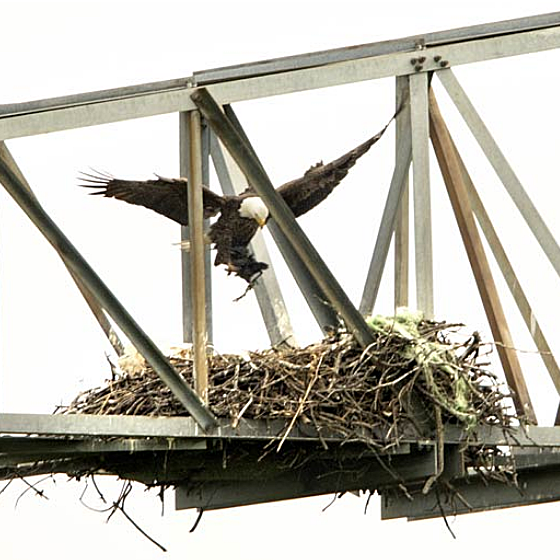Welcome to the John Bunker Sands Eagle Tower Cam
Camera & Solar Equipment Technical Information
Video cameras at eagle nests and other wildlife sites around America and internationally provide learning opportunities for millions of people.
There's an aspect to the background for every camera system that frequently goes unnoticed. Very simply, "How did these systems get installed, and what makes them work?" We've answered the first question elsewhere on this site.
This page answers the second question by providing behind-the-scenes information about the equipment that makes the John Bunker Sands Wetland Center Eagle Tower Cam possible.
The system description starts with the camera at the top of the "Eagle Tower", and ends with the solar equipment at the bottom of the tower. The most obvious hardware is the camera, followed closely by the microphone near the nest. The Wetland Center Eagle Tower Cam is more than a mile from commercial electrical lines. For that reason, equipment is powered exclusively by solar energy. System electronics are housed in a weatherproof enclosure mounted six feet above the ground on a frame that also holds the solar panels.
| Hardware Item | Description |
|---|---|
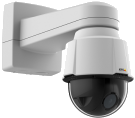 | Cameras are the heart of any wildlife video system, and John Bunker Sands Wetland Center executives selected the best. As is common for non-profit organizations, decisions are governed by the budget. The options: Install two lower quality cameras for two different views, or a high quality model and one view. The latter was chosen. The camera itself is housed inside a weatherproof dark plastic dome. The eagles can't hear it or see it move. See our Frequently Asked Questions page for more information about the camera, and photos 12 & 13 on our 2020 System Installation Page to see the camera location on the tower. JBS Wetland Center Nest Camera Specifications: Resolution: 1080p, but set to 720p for streaming video. Pan (rotate): Yes. 360° continuous Tilt: Yes Zoom: Yes (30X) Infrared: Yes |
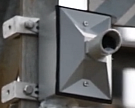 | Microphones add a new dimension to wildlife cam systems. A weatherproof microphone was added to the JBS Eagle Tower Cam system in 2020. You can hear the eagles communicate with each other, or warn off intruders. In calm weather, coyotes, owls, wild pigs, and other animals are audible. When it's windy, mic audio sounds like a hurricane. To the eagles, it's just another breezy day. The sensitivity is set high to allow hearing the faint sounds of eaglets when they hatch. Photo 13 on our 2020 System Installation Page shows where the microphone is mounted relative to the nest. |
 | Photovoltaic modules (commonly called "solar panels") convert sunlight into electricity. Solar panels are requred at the JBS Eagle Tower Cam because the tower is a long distance from utility power. Each solar panel at the JBS Eagle Tower is rated to produce 280 watts. These solar panels are made from tempered glass, and are resistant to damage from hail. |
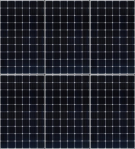 | Two or more solar panels connected together are called an "array". The array at the John Bunker Sands Wetland Center Eagle Tower Cam is comprised of six solar panels as illustrated here. The Wetland Center Eagle Tower Cam system consumes electricity 24 hours a day. Having six solar panels helps ensure the batteries are as fully charged as possible at all times, even during cloudy weather. Photo 5 on our 2020 System Installation Page shows the solar panel array. |
 | A charge controller ensures optimal operation of the solar panels and prevents the batteries from being over-charged. This charge controller is made in America by "Midnite Solar" (near Seattle), and has a long history of very high reliability in the solar industry. This charge controller reports the performance of the solar panels, the charge status and temperature of the batteries, and other important details about the electrical equipment. Data is sent via microwave radio link to Wetland Headquarters with the video and audio signals, and is monitored remotely over the Internet. |
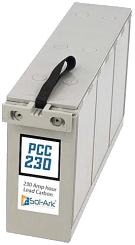 | Batteries in the Wetland Center Eagle Tower Cam solar system are designed for very deep discharges without damage. For perspective, a typical car battery weighs 60-75 lbs (27.2-34 kg) and would be worn out in six months. Batteries in the Eagle Tower Cam system weigh 160 lbs (76 kg) each and are expected to work for 12 years or longer. Three batteries are used in this system, and have a combined weight of nearly 500 lbs (227 kg)! Battery Specifications: Chemistry: Lead-carbon Ratings: 12 Volts, 230Ah @ 24 hour discharge rate Type: Sealed. Maintenance free. Safety: Conform to the UL 1989 Safety Standard Life Expectancy: 12+ years Charging Efficiency: 98% |
 | The "inverter" in the Wetland Center Eagle Tower Cam system changes direct current into 120 volt alternating current identical to what we get from outlets in our houses. Many of the electronics in the cam system required 120 volts AC. Rather than use a separate power source for each piece, it was simpler and more reliable to use a small inverter to provide 120 volts AC for everything. This inverter is made by Exeltech in Fort Worth Texas. It provides true sine wave electricity, with absolutely no interference to the sensitive camera and audio electronics. |
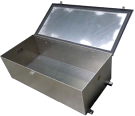 | All of the electrical and electronic hardware is installed in a ventilated weatherproof aluminum enclosure custom manufactured specifically for this project. Screening at the vents prevents intrusion by insects and critters. The electronics enclosure is mounted out of the sun behind the solar panels to help keep everything cool. In turn, the solar panels and enclosure are on an elevated rack high enough to protect the panels and electronics from feral hogs, cattle, and other animals. |
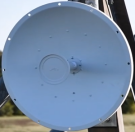 | Data from the Eagle Tower Cam system is sent via microwave radio link from the eagle tower to JBS Wetland Center headquarters. At the same time, the Wetland Center staff can send pan (rotate), tilt, and zoom commands to the camera over the same link. |
